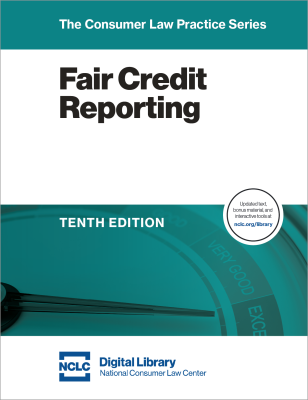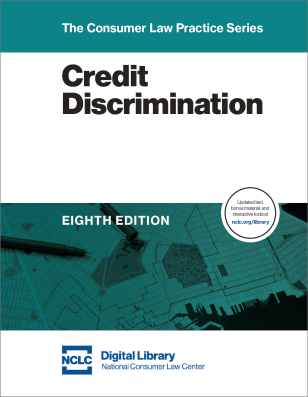On April 28, 2024, the U.S. Department of Housing and Urban Development’s (HUD) Office of Fair Housing and Equal Opportunity (FHEO) issued strong and comprehensive guidance to protect rental housing applicants from discriminatory tenant screening practices that could potentially violate the anti-discrimination provisions of the Fair Housing Act (FHA). See FHEO, HUD, Guidance on Application of the Fair Housing Act to the Screening of Applicants for Rental Housing (Apr. 29, 2024) (HUD/FHEO Tenant Screening Guidance).
The guidance generally discusses how the FHA anti-discrimination provisions apply to tenant screening practices and then focuses on the three main components of tenant screening reports: credit reports/scores, criminal records, and eviction filings. It also discusses the implications of the use of machine learning and artificial intelligence (AI) by tenant screening agencies. Throughout the guidance, HUD/FHEO emphasizes the disparate impact of tenant screening practices on protected classes, including race, color, religion, sex (including sexual orientation and gender identity), national origin, disability, and familial status.
The guidance cites several times to NCLC’s report Digital Denials: How Abuse, Bias, and Lack of Transparency in Tenant Screening Harm Renters (2023).
Implications for Private Remedies for Tenant Screening Practices
The new guidance has implications for private litigation concerning tenant screening. When discriminatory tenant screening practices violate the FHA, tenants can potentially bring actions against both landlords and tenant screening companies seeking a multitude of FHA remedies—tangible and intangible actual damages (including emotional distress, pain and suffering, humiliation, or damage to credit standing ), punitive damages, equitable relief, and attorney fees. See 42 U.S.C. § 3613; NCLC’s Credit Discrimination § 11.8.
Lawsuits bringing disparate impact instead of disparate treatment claims (see below for explanation of the difference) do require data and statistics—and likely expert testimony—to make out a prima facie case that a facially neutral policy has a disproportionately adverse impact on a protected class. See NCLC’s Credit Discrimination § 4.3.2.4.
FHA Discrimination Prohibition’s Application to Tenant Screening
The HUD guidance provides an overview of the FHA, which prohibits discrimination in the sale, rental, and financing of dwellings and in other housing-related services based on a protected class. 42 U.S.C. § 3601 et seq.; see generally NCLC’s Credit Discrimination §§ 3.3, 3.5. The HUD guidance makes clear that the FHA applies to both housing providers and tenant screening companies, discussing the liability of each type of actor. HUD/FHEO Tenant Screening Guidance at 4–6.
The guidance discusses how the FHA prohibits both intentionally discriminatory practices, as well as those with an unjustified discriminatory effect. Id. at 6–8; see also NCLC’s Credit Discrimination Chapter 4. With respect to the second type of discrimination, it describes the three-step burden shifting test to show disparate impact:
- Step 1: The plaintiff must show that a screening policy or practice (i) causes or predictably will cause a disparate impact on a protected group or (ii) it creates, perpetuates, increases, or reinforces segregation.
- Step 2: The burden shifts to the defendant to prove that the policy or practice is necessary to achieve a substantial, legitimate, nondiscriminatory interest. The HUD guidance notes that only screening criteria and standards that are “well-tailored to predict future behavior relevant to tenancy can be considered necessary to achieving a legitimate interest.”
- Step 3: The burden shifts back to the plaintiff to prove that the interest set forth in Step 2 could be served by another practice that has a less discriminatory effect. The guidance notes that if “a screening policy is overbroad (i.e., it screens out unproblematic applicants), a more targeted screening policy could be a less discriminatory alternative.”
HUD/FHEO Tenant Screening Guidance at 7–8; see also NCLC’s Credit Discrimination § 4.3.
Requirements and Recommendations for FHA Compliance
The HUD guidance makes recommendations for practices that landlords and tenant screening companies should adopt to ensure compliance with the FHA. Failure to comply with these recommendations may be relevant to a private discrimination action against a landlord or tenant screening company.
The guidance notes that some of the recommendations are mandated by other laws, including the Fair Credit Reporting Act (FCRA), and that, concerning Step 2, supra, “screening practices prohibited by any applicable law will not be considered necessary to achieve a substantial, legitimate, nondiscriminatory interest under the Fair Housing Act.” HUD/FHEO Tenant Screening Guidance at 8.
—Recommendations for Landlords
The HUD guidance’s recommendations for landlords include:
- Adopting clear, detailed, and publicly available screening policies. They should customize the criteria, standards, and weights of a screening product to conform to these policies, rather than purchasing an “off the shelf” product. They should make an independent determination based on these screening policies, even when the screening report makes a denial recommendation.
- Providing applicants with an opportunity to dispute the accuracy or relevance of any negative information.
- Selecting screening services that: offer customizability; frequently update their data; monitor for unjustified discriminatory effects; report clear and specific reasons for denials; allow individuals to correct inaccuracies; publicly disclose key details about their screening systems; and comply with all applicable Federal, state, and local laws.
HUD/FHEO Tenant Screening Guidance at 8–9.
—Recommendations for Tenant Screening Companies
The HUD guidance’s recommendations for tenant screening companies include:
- Conducting civil rights monitoring to ensure that their models comply with the FHA.
- Refraining from providing denial recommendations or low “grades” in a conclusory fashion; instead screening reports should include all available relevant details about the basis for the determination.
- Enabling applicants to dispute whether a record should be included in their file as a potential ground for denial even if the record is accurate, such as when an eviction is related to domestic violence.
HUD/FHEO Tenant Screening Guidance at 9–10.
—Recommendations for Both Landlords and Tenant Screening Companies
The HUD guidance makes several recommendations applicable to both landlords and tenant screening companies. It suggests that, if a screening policy disproportionately excludes applicants of a certain race or other protected class, then conducting more precise screening may be a less discriminatory alternative. HUD/FHEO Tenant Screening Guidance at 11.
The HUD recommendations include:
Relevancy. Screening should be based on information relevant to whether an applicant will be a successful tenant. Some considerations for relevancy are:
- Not rejecting applications for past incidents unlikely to recur (e.g., eviction due to job loss).
- Waiving screening criteria that are not relevant for an applicant’s individual circumstances (e.g., minimum income requirement for an applicant whose rent will be paid by someone else).
- Prioritizing the most relevant records, such as the most recent records versus older ones;
- Disregarding records without a negative outcome (e.g., an eviction record if the tenant prevailed), including when a record does not provide enough information to determine who prevailed.
- Considering other sources of income or financial resources, such as Housing Choice Vouchers when assessing an applicant’s ability to afford rent.
Id.
Accuracy. The HUD guidance notes that if tenant screening has a discriminatory effect, it may fail to meet the second step of the FHA disparate impact analysis of being necessary for a legitimate nondiscriminatory interest if it uses records that are rife with inaccuracies. The HUD guidance cautions against:
- Using datasets that are incomplete, missing key personal identifiers, or updated infrequently.
- Mis-categorizing records, including court records that do not clearly state whether the record is for a felony versus a misdemeanor.
- Matching practices that erroneously attribute records to the wrong person; records should be matched using multiple identifiers, and “wildcard” or “name-only” matching should not be used. (The CFPB has also issued guidance on this issue. See CFPB, Advisory Opinion on Fair Credit Reporting; Background Screening, 89 Fed. Reg. 4171 (Jan. 23, 2024), as summarized in an NCLC Digital Library article).
HUD/FHEO Tenant Screening Guidance at 11–12.
Transparency. The HUD guidance notes the importance of transparency to help ensure consistent, nondiscriminatory results, as well as providing applicants with sufficient information to decide whether to pay an application fee. The HUD guidance recommends:
- Tenant screening policies should be in writing, made public, and readily available to potential applicants.
- Records outside the scope of the screening policy should not be considered.
- Denial letters should contain as much detail as possible as to all reasons for the denial, including the specific standard(s) that the applicant did not meet and how they fell short. The denial should attach all records that were relied on, including any screening reports.
HUD/FHEO Tenant Screening Guidance at 13-14.
Disputes and mitigating factors. The HUD guidance recommends that applicants be given the opportunity:
- To dispute the accuracy or completeness of any negative information.
- To show that even if a negative record is accurate, they will comply with their tenancy obligations by challenging the relevancy of a standard (e.g., minimum income requirements for those with Housing Choice Vouchers) or providing evidence of mitigating circumstances (e.g., participation in a rehabilitation program, a change in employment status).
HUD/FHEO Tenant Screening Guidance at 14.
The HUD guidance provides in-depth analysis and recommendations concerning the use of credit history, eviction history, and criminal records, emphasizing that overbroad screening based in these areas are especially likely to have an unjustified discriminatory effect.
Specific Questionable Tenant Screening Practices
—Credit History
The HUD guidance starts by highlighting that entities developing credit scores should design them to assess the relative risk of consumers defaulting on a loan—not the risk that a tenant will fail to pay rent. The guidance describes both the racial disparities in credit reports and scores and the likelihood that survivors of domestic violence are more likely to have had experiences resulting in no or low credit scores. HUD/FHEO Tenant Screening Guidance at 16.
Importantly, the HUD guidance goes on to state:
Because of these disparities, overbroad screenings for credit history may have an unjustified discriminatory effect based on race or other protected characteristics. HUD is unaware of any studies showing that credit reports and scores accurately predict a successful tenancy, and as mentioned above they were not designed for this purpose. Many households prioritize paying the rent over other debts during times of financial hardship, yet their choice to do so—which should indicate they will continue to prioritize paying rent—is generally not considered in their favor in the credit history analysis.
Given these significant and recognized limitations of credit scores as a predictor of likelihood to pay rent and given the disparities noted above, overreliance on credit history poses a significant risk of having an unjustified discriminatory effect based on race or other protected characteristics.
Id. at 17–18.
Noting that no HUD program requires screening using credit scores, the guidance goes on to discourage landlords and tenant screening companies from using credit information when a government entity is guaranteeing a significant portion of the applicant’s income. It notes that under assisted housing programs, a public housing agency or other entity has already deemed the rent affordable based on the applicant’s income and will increase the amount of assistance if the applicant’s income decreases. Id.
Other circumstances in which an applicant’s credit history may not be relevant include:
- When the applicant has a cosigner who satisfies the financial screening criteria.
- Negative credit history is due to an event that is unlikely to recur, such as a family or medical emergency.
- When the household member responsible for paying the rent passes the financial screening criteria, the credit history of other household members has no relevance.
- Minimal or poor credit history is due to domestic violence, dating violence, sexual assault, or stalking, because it is not the fault of the survivor and does not bear upon the likelihood that the survivor will pay their rent on time in the future.
Id.
The HUD guidance also notes that waiving or adjusting credit screening may also be required as a reasonable accommodation if an applicant’s poor credit history is related to their disability. Finally, it states that “[h]aving no credit history or limited credit history (i.e., an absence of credit history, negative or positive) is even less relevant than having poor credit history.” Id. at 19.
—Eviction History
The HUD guidance discusses the unreliability of eviction court records, noting 22% of the eviction records in a large study contained ambiguous information on how the case was resolved or falsely represented a tenant’s eviction history. It also emphasized the disproportionate effect of eviction on Black and Hispanic renters, women, families with children, and people with disabilities. HUD/FHEO Tenant Screening Guidance at 19.
The guidance further states that:
- Old, incomplete, and irrelevant eviction records should not be used.
- Applicants should not be denied based on proceedings where the tenant prevailed, a settlement was reached, or the matter was dropped; it notes that the FCRA requires tenant screening companies to include existing disposition information for eviction records.
- An eviction for non-payment of rent from a market-rate unit should not be relevant when an applicant has begun receiving rental assistance (e.g., from a government agency).
- It would be “problematic” to rely on a past eviction filed against a tenant in retaliation for asserting their rights.
Id. at 20.
—Criminal Records
Justice-involved people are disproportionately people of color and people with disabilities. Overbroad criminal records screenings are likely to have an unjustified discriminatory effect because of these disparities. Overbroad screenings include those that:
- Do not differentiate between offenses based on their nature, severity, or how long ago they occurred.
- Consider records that did not result in a conviction.
- Do not provide an opportunity to provide mitigating information.
HUD/FHEO Tenant Screening Guidance at 21.
When considering the criminal record of an individual with a disability, a reasonable accommodation may be required. One example is not considering a criminal record if the individual’s disability makes it unlikely that they would reoffend. Id. at 22.
Artificial Intelligence and Tenant Screening
The HUD guidance includes a discussion of using artificial intelligence and machine learning in tenant screening. It notes that the FHA applies broadly, including to housing decisions made using these technologies. In fact, the HUD guidance emphasizes on its first page that the FHA “applies to housing decisions regardless of what technology is used. Both housing providers and tenant screening companies have a responsibility to avoid using these technologies in a discriminatory manner.” HUD/FHEO Tenant Screening Guidance at 1.
The HUD guidance recommends that screeners using complex models should choose those that are more interpretable, especially when it does not meaningfully reduce accuracy or fairness. This is because, if a complex model has a discriminatory effect, it may be difficult to ascertain that a legally sufficient justification exists for purposes of FHA compliance when the model is not transparent. HUD/FHEO Tenant Screening Guidance at 14–15.
The FHA guidance recommends that models be trained using demographically representative data to help ensure that the model does not erroneously learn that certain protected classes should be screened out at higher rates. It notes that over- and under-representation can occur when models are trained on real-world data because these datasets are influenced by historic and ongoing discrimination and must be processed in a way that ensures the model does not perpetuate those effects. Id. at 15.
Finally, the HUD guidance recommends that models should be validated as having accurately and equitably predicted behaviors in the past, and should be reassessed to ensure they continue to do so. HUD notes that models that are not predictive of future tenant behavior do not further a housing provider’s interest in avoiding renting to problematic tenants. Id. This raises the question whether tenant screening companies have publicly disclosed any data and empirical research showing that current models used by tenant screening companies are in fact predictive.




